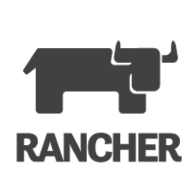

Splunk Observability Cloud and Rancher Labs are prominent in the enterprise IT solutions sector, with Splunk showing an edge due to its advanced features and extensive integration capabilities, albeit typically at a higher price point.
Features: Splunk Observability Cloud offers real-time data analysis, application performance monitoring, and customizable dashboards, ideal for diverse IT environments. Rancher Labs provides robust orchestration and deployment capabilities for container management, emphasizing ease of use in Kubernetes environments and efficient cluster management.
Room for Improvement: Splunk users desire a more intuitive interface and simplified indexing processes, alongside competitive pricing and enhanced integrations. Rancher Labs could improve by further refining its deployment process, enhancing its observability tools, and expanding security features and multi-cloud support.
Ease of Deployment and Customer Service: Splunk supports diverse deployment models, including hybrid clouds, with variable support response times. Rancher Labs, leveraging its open-source nature, ensures easy deployment with responsive customer service, though users occasionally depend on external resources for complex issues.
Pricing and ROI: Splunk's rich features come at a premium, often justified by superior monitoring and ROI in operational efficiency. Rancher Labs offers a more cost-effective approach with its open-source model, appealing to organizations with a priority on budget-friendly container management.
Using Splunk has saved my organization about 30% of our budget compared to using multiple different monitoring products.
Anyone working in front-end management should recognize the market price to see the true value of end-user monitoring.
I have definitely seen a return on investment with Splunk Observability Cloud, particularly through how fast it has grown and how comfortable other teams are in relying on its outputs for monitoring and observability.
On a scale of 1 to 10, the customer service and technical support deserve a 10.
They have consistently helped us resolve any issues we've encountered.
They often require multiple questions, with five or six emails to get a response.
We've used the solution across more than 250 people, including engineers.
As we are a growing company transitioning all our applications to the cloud, and with the increasing number of cloud-native applications, Splunk Observability Cloud will help us achieve digital resiliency and reduce our mean time to resolution.
I would rate its scalability a nine out of ten.
I would rate its stability a nine out of ten.
We rarely have problems accessing the dashboard or the page.
Unlike NetScout or regular agents for APM, RUM has many problems during the POC phase because customer environments vary widely.
The out-of-the-box customizable dashboards in Splunk Observability Cloud are very effective in showcasing IT performance to business leaders.
The next release of Splunk Observability Cloud should include a feature that makes it so that when looking at charts and dashboards, and also looking at one environment regardless of the product feature that you're in, APM, infrastructure, RUM, the environment that is chosen in the first location when you sign into Splunk Observability Cloud needs to stay persistent all the way through.
There is room for improvement in the alerting system, which is complicated and has less documentation available.
Splunk is a bit expensive since it charges based on the indexing rate of data.
It is expensive, especially when there are other vendors that offer something similar for much cheaper.
It appears to be expensive compared to competitors.
Splunk provides advanced notifications of roadblocks in the application, which helps us to improve and avoid impacts during high-volume days.
For troubleshooting, we can detect problems in seconds, which is particularly helpful for digital teams.
It offers unified visibility for logs, metrics, and traces.
| Product | Market Share (%) |
|---|---|
| Splunk Observability Cloud | 0.5% |
| Rancher Labs | 6.7% |
| Other | 92.8% |


| Company Size | Count |
|---|---|
| Small Business | 6 |
| Midsize Enterprise | 2 |
| Large Enterprise | 6 |
| Company Size | Count |
|---|---|
| Small Business | 20 |
| Midsize Enterprise | 10 |
| Large Enterprise | 43 |
Rancher Labs build innovative, open source software that makes it easy to deploy and manage containers in production on any infrastructure. We enable organizations to accelerate all aspects of their software development pipeline, from writing and testing code to running complex microservices-based applications.
Rancher, our flagship container management platform, allows users to easily manage all aspects of running containers in development and production environments, on any infrastructure. With well over four million downloads, Rancher has quickly become the tools of choice for teams serious about running containers in production. This includes large enterprises such as Sony, IBM, Tyco, Align Technologies and more.
Splunk Observability Cloud offers sophisticated log searching, data integration, and customizable dashboards. With rapid deployment and ease of use, this cloud service enhances monitoring capabilities across IT infrastructures for comprehensive end-to-end visibility.
Focused on enhancing performance management and security, Splunk Observability Cloud supports environments through its data visualization and analysis tools. Users appreciate its robust application performance monitoring and troubleshooting insights. However, improvements in integrations, interface customization, scalability, and automation are needed. Users find value in its capabilities for infrastructure and network monitoring, as well as log analytics, albeit cost considerations and better documentation are desired. Enhancements in real-time monitoring and network protection are also noted as areas for development.
What are the key features?In industries, Splunk Observability Cloud is implemented for security management by analyzing logs from detection systems, offering real-time alerts and troubleshooting for cloud-native applications. It is leveraged for machine data analysis, improving infrastructure visibility and supporting network and application performance management efforts.
We monitor all Container Management reviews to prevent fraudulent reviews and keep review quality high. We do not post reviews by company employees or direct competitors. We validate each review for authenticity via cross-reference with LinkedIn, and personal follow-up with the reviewer when necessary.